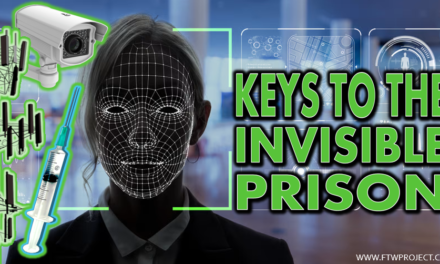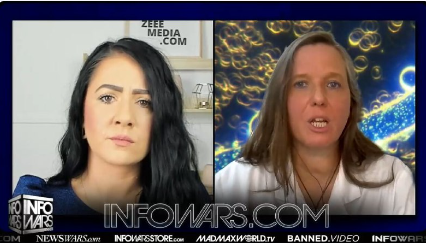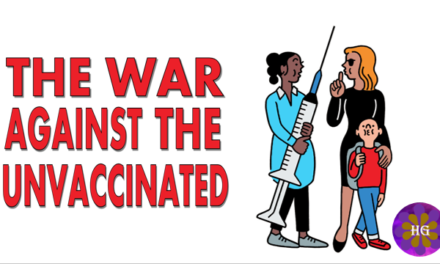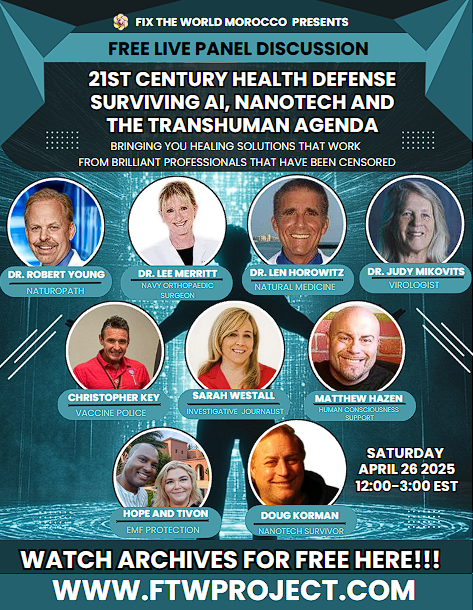Cancer genomics expert Dr. Phillip Buckhaults recently testified to the South Carolina Senate about the DNA contamination found in Pfizer’s mRNA COVID-19 vaccines. There are an estimated 200 billion pieces of plasmid DNA in each dose of the Pfizer COVID-19 vaccine, he said. These pieces of DNA are packaged in lipid nanoparticles, basically a synthetic virus, and are delivered into vaccinees’ cells.

Dr. Phillip Buckhaults is a Professor at the University of South Carolina. He has a PhD in biochemistry and molecular biology and conducts cancer genomics research. What that effectively means is he and his team are specialists at detecting foreign pieces of DNA in places where they are not supposed to be.
On 12 September, he testified before the South Carolina Senate Medical Affairs Ad-Hoc Committee on the Department of Health and Environmental Control (“DHEC”).
“The Pfizer vaccine is contaminated with plasmid DNA. It’s not just mRNA, it’s got bits of DNA in it.” Prof. Buckhaults said.
A colleague who was in charge of the vaccination programme in Columbia, South Carolina, kept all the Pfizer vials, containing remnants of the contents, from the two batches that were used. From the remnants, Prof. Buckhaults sequenced all the DNA that was in these vials. “I can see what’s in [the vaccines] and it’s surprising that there’s any DNA in there. And you can kind of work out what it is and how it got there and I’m kind of alarmed about the possible consequences of this both in terms of human health and biology,” he said.
“This DNA, in my view, it could be causing some of the rare, but serious, side effects like death from cardiac arrest.
“This DNA can and likely will integrate into the genomic DNA of cells that got transfected with the vaccine mix … we do this in the lab all the time; we take pieces of DNA, we mix them up with a lipid complex, like the Pfizer vaccine is in, we pour it onto cells and a lot of it gets into the cells. And a lot of it gets into the DNA of those cells and it becomes a permanent fixture of the cell. It’s not just a temporary thing. It is in that cell from now on and all of its progeny from now on and forever more … So, that’s why I’m kind of alarmed about this DNA being in the vaccine. It’s different from RNA because it can be permanent.”
Based on solid molecular biology, it is a theoretical but reasonable concern that this DNA could cause a sustained autoimmune attack towards that tissue, he said.
“It’s also a very real theoretical risk of future cancer in some people. Depending on where in the genome this foreign piece of DNA lands it can interrupt a tumour suppressor or activate an oncogene,” he added. “I think it’ll be rare but I think the risk is not zero.”
“DNA is a long-lived,” Prof. Buckhaults explained. “What you were born with you’re going to die with and pass on to your kids. DNA lasts for hundreds of thousands of years … So, alterations to the DNA – they stick around.”
Prof. Buckhaults explained that there are a LOT of pieces of DNA in Pfizer’s vaccines. Although some are 5,000 and 500 base pairs long, most of the pieces are around 100 base pairs. But this is irrelevant because the probability of a piece of DNA integrating into the human genome is unrelated to its size. “Your genome risk is just a function of how many particles there are,” he said. “All these little pieces of DNA that are in the vaccine [give] many many thousands of opportunities to modify a cell of a vaccinated person.”
“The pieces are very small because during the process they chopped them up to try to make them go away – but they actually increased the hazard of genome modification in the process.”
Prof. Buckhaults’ team took all these little pieces of DNA and “glued them together” to try to establish its source. After putting together 100,000 pieces of DNA they were able to establish it came from a plasmid that can be purchased online from Agilent, a Californian life sciences company which was established in 1999 as a spin-off from Hewlett Packard.
“It’s clear that Pfizer took this plasmid and then they cloned spike into it and they used it in a process … where you feed an RNA polymerase, this plasmid, and it makes a whole bunch of mRNA copies … and then you take this mRNA and you mix it with the lipid nanoparticle transfection agent and now you’ve got your mRNA vaccine. But they failed to get the DNA out before they did this … they did make some effort to chop it up so all these little pieces of the plasma got packaged in with the RNA. That’s clear as day what happened just from the forensics of looking at the DNA sequencing,” Prof. Buckhaults said.
He explained that this process was not the same as the process that was in the vaccines used to gain emergency authorisation (“EUA”). So, there was no DNA in the batches used for the trials before the mass COVID-19 injection campaigns. The problem with DNA contamination only occurred when Pfizer scaled up production for the administration of millions/billions of doses to the public after it had gained EUA.
“We can quantify how much of this [DNA] is in a vaccine … I estimate that there were about two billion copies of the one piece [of the plasmid] that we’re looking for in every dose … If you see two billion copies of [one piece] … [then] there’s probably about 200 billion of pieces of this plasmid DNA in each dose of the vaccine,” Prof. Buckhaults said.
The hundreds of billions of pieces of plasmid DNA are encapsulated in the lipid nanoparticles so it’s ready to be delivered into the cell. “This is a bad idea,” he said. “[The DNA is] basically packaged in a synthetic virus able to dump its contents into a cell.”
He recommended that some vaccinated people be tested to see if the plasmid DNA is integrating into their genomes. This harm you can prove. With other vaccine harms you can be suspicious because of the timing but you can’t really prove it. “This one you can prove it because it leaves a calling card. [If] you find it in the stem cells of harmed people, it’s equivalent to finding a certain type of lead in someone who is now dead, it’s pretty reasonable to assume that that’s what caused it,” he said.
You can watch Prof. Buckhaults’ full testimony to the South Carolina Senate Medical Affairs Ad-Hoc Committee on DHEC in the video below. Dr. Jessica Rose has provided some additional thoughts on his testimony in a Substack article which you can read HERE.
Source: https://expose-news.com/2023/11/03/200bil-dna-in-pfizer-c19-jab/
Bitchute: https://www.bitchute.com/channel/YBM3rvf5ydDM/
Telegram: https://t.me/Hopegirl587
EMF Protection Products: www.ftwproject.com
QEG Clean Energy Academy: www.cleanenergyacademy.com
Forbidden Tech Book: www.forbiddentech.website













